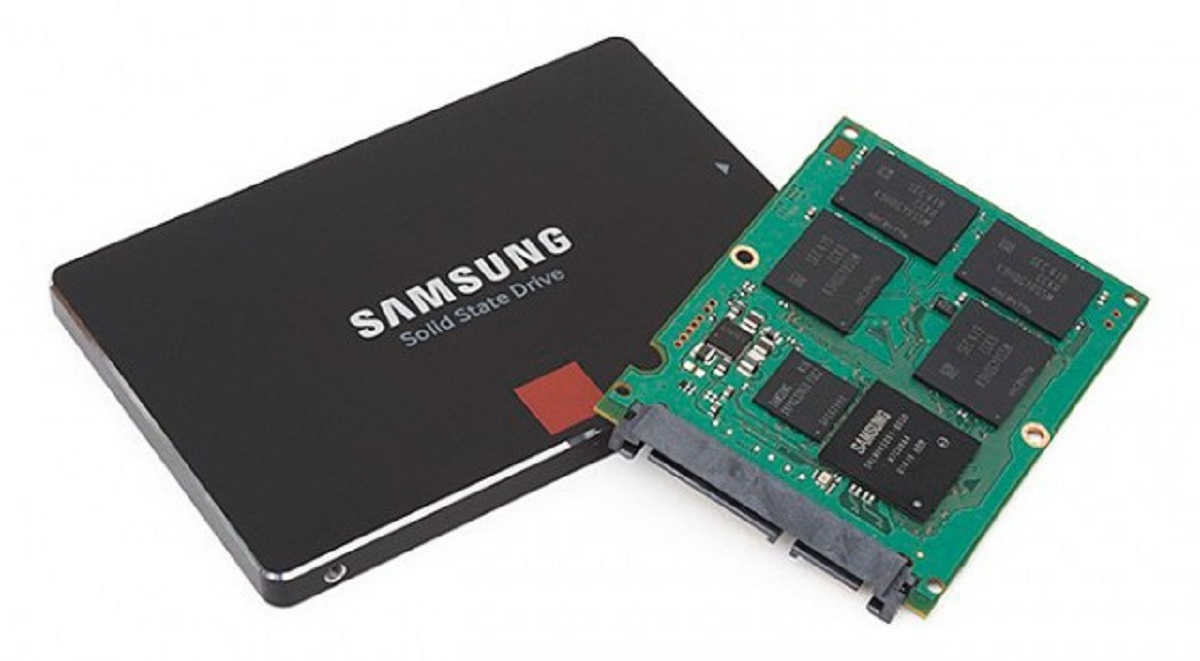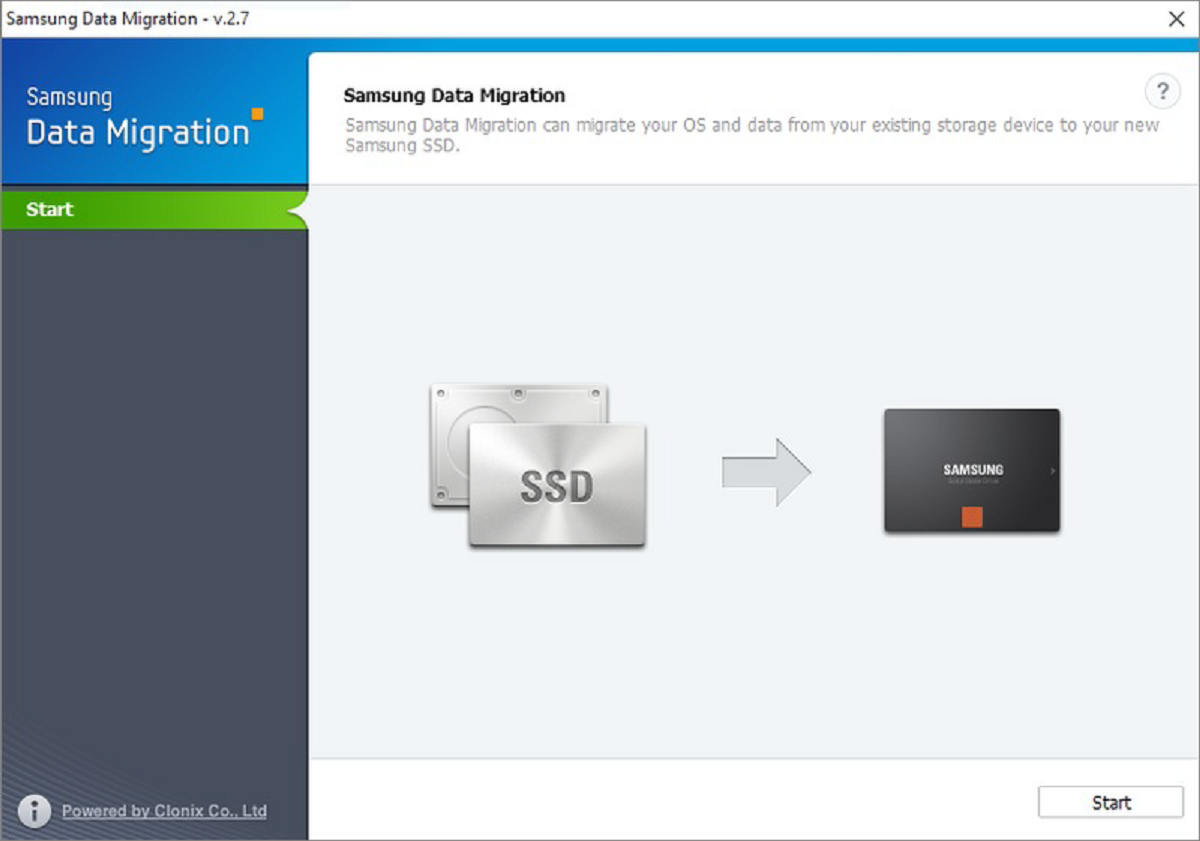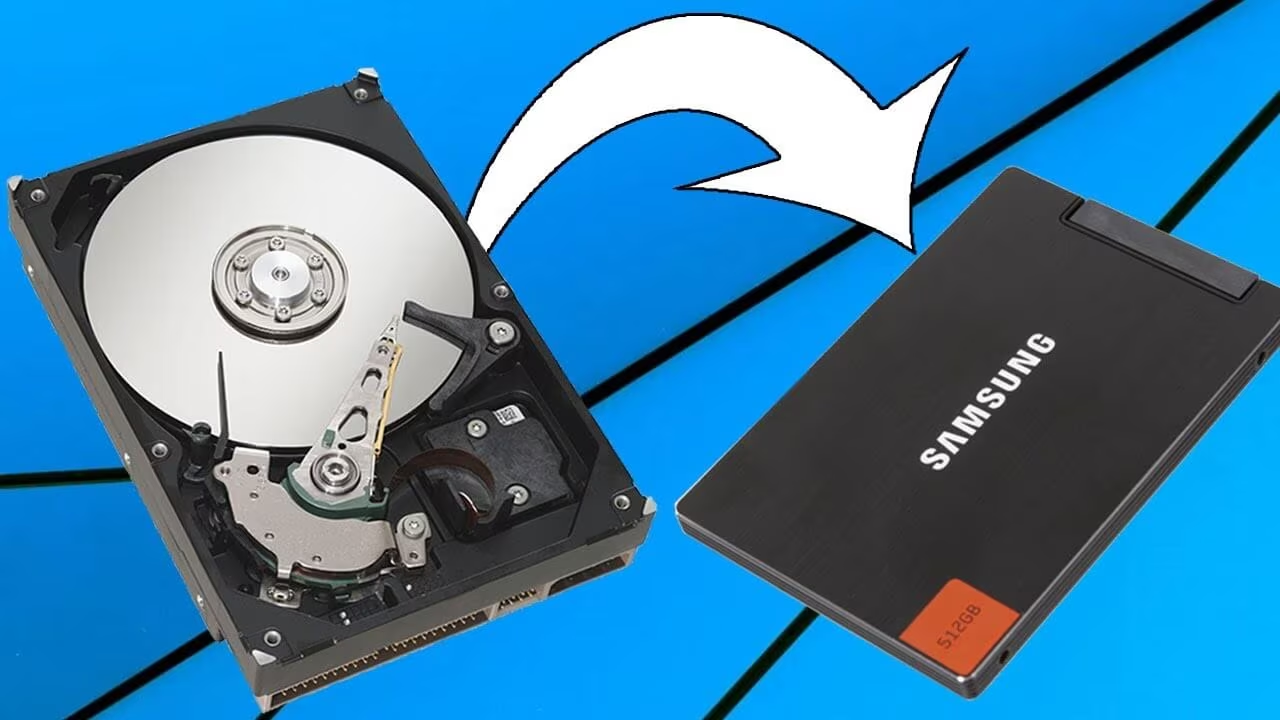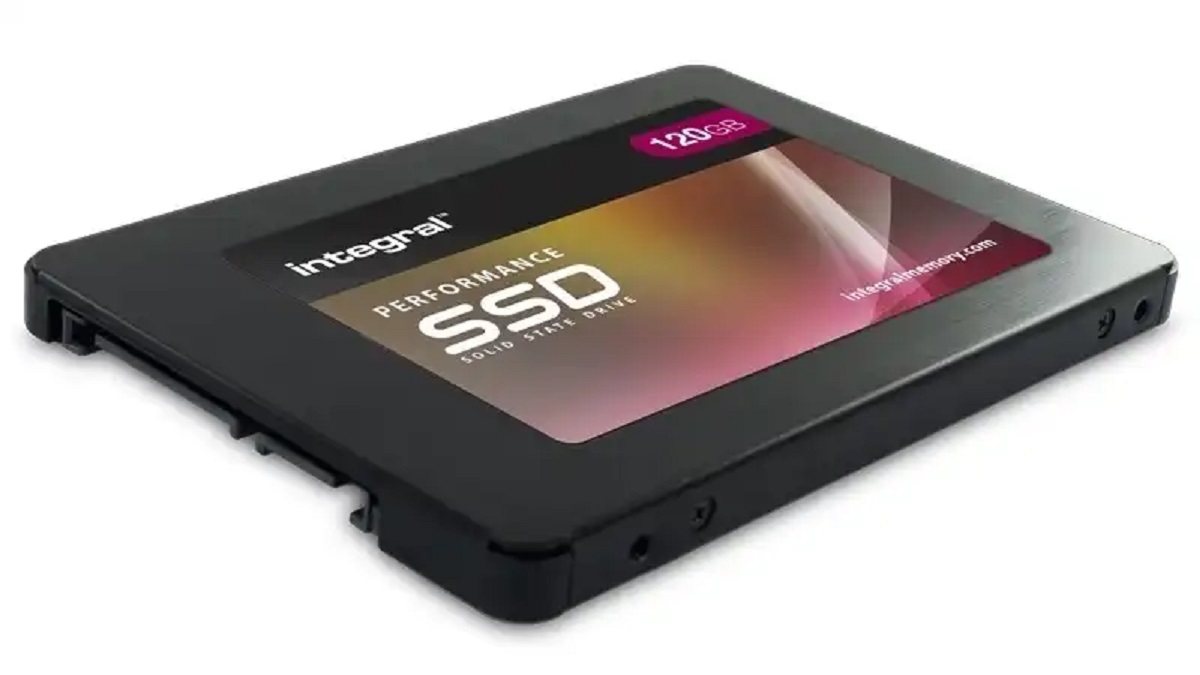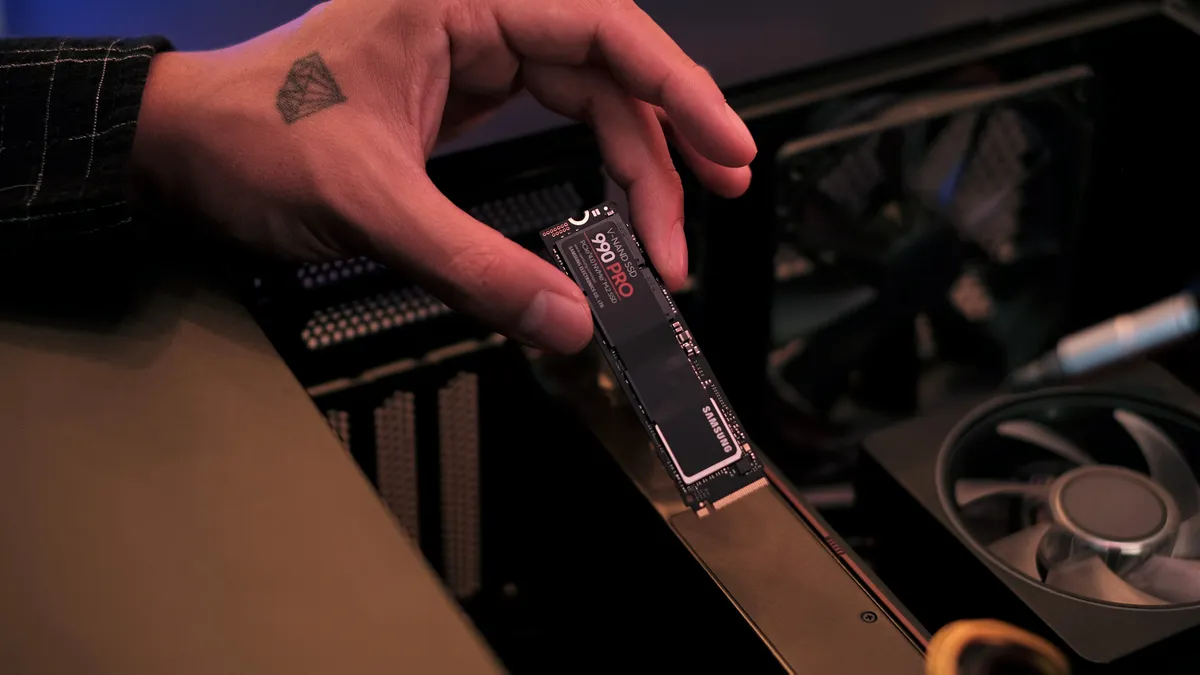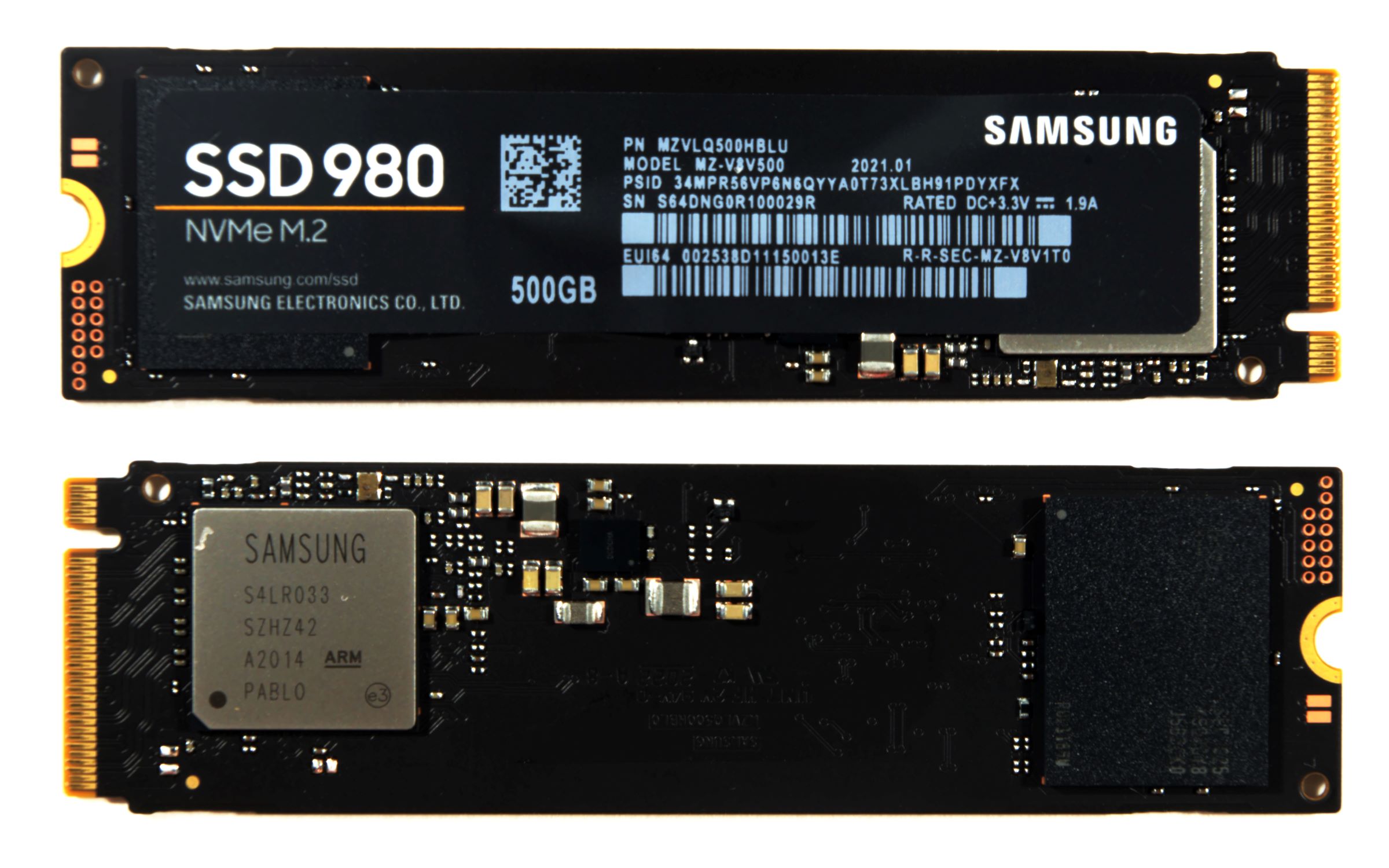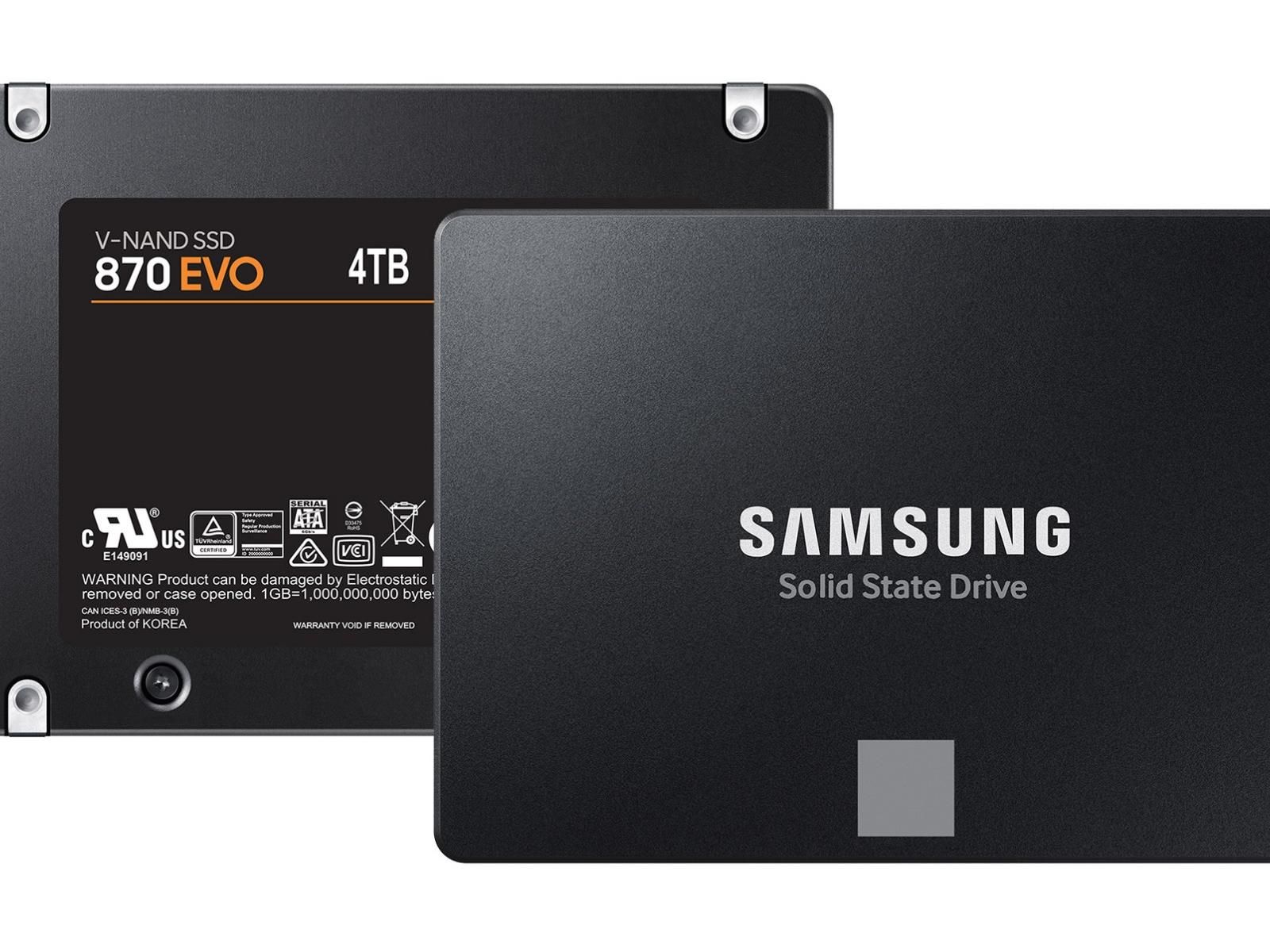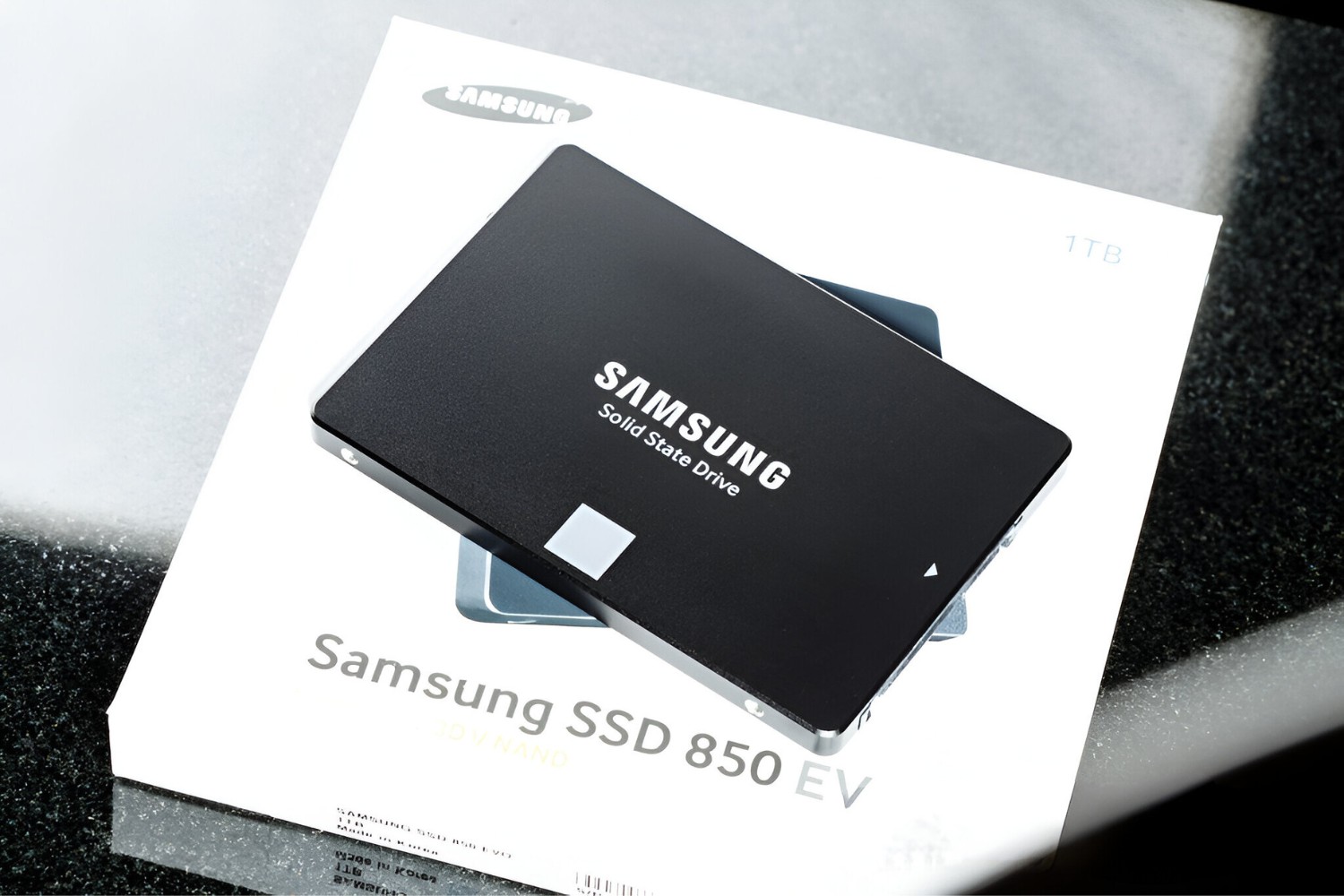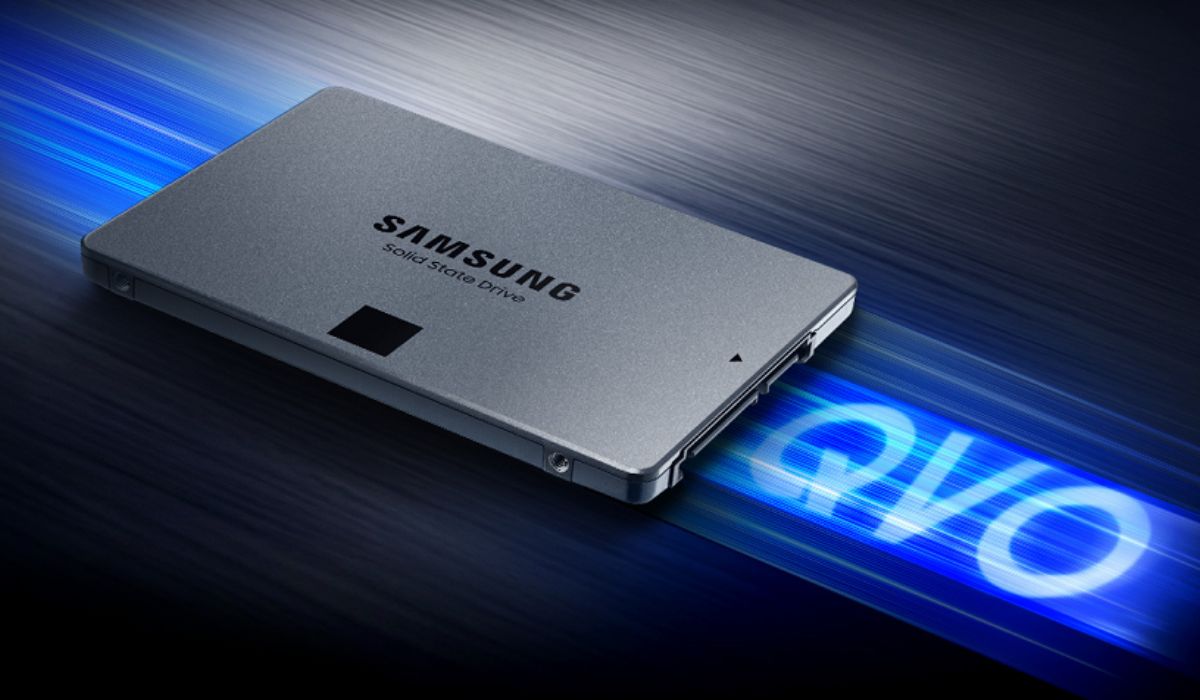Introduction
Have you ever wanted to clone your Samsung SSD? If you’re looking to upgrade your storage or create a backup of your data, cloning is an efficient and convenient method. In this article, we will guide you through the process of cloning your Samsung SSD, step by step.
But first, let’s understand what cloning is. Cloning, in the context of SSDs, is the process of creating an exact replica or duplicate of your existing SSD onto another SSD. This means that all your files, settings, programs, and operating system will be transferred to the new drive, ensuring a seamless transition without the need to reinstall everything from scratch.
So, why would you want to clone your Samsung SSD? There are a few reasons why cloning can be beneficial:
- Upgrading to a larger capacity SSD: If you find that your current Samsung SSD is running out of space and you need more storage, cloning allows you to transfer all your data to a new, larger capacity drive without the hassle of reinstalling everything.
- Creating a backup: Cloning your SSD can serve as a reliable backup strategy. By having an exact copy of your drive, you can safeguard your data in case of drive failure or other emergencies.
- Transferring to a new Samsung SSD: If you’ve recently purchased a new Samsung SSD and want to transfer all your files and settings from your old drive to the new one, cloning is the quickest and easiest way to do so.
Before we dive into the cloning process, it’s crucial to prepare for the task. Make sure you have the necessary tools, including a new Samsung SSD, a cloning software, and a backup of your important files. It’s always recommended to backup your data before any major changes to avoid the risk of data loss.
In the following sections, we will provide you with a step-by-step guide on how to clone your Samsung SSD, troubleshoot common issues you may encounter, and help you achieve a successful cloning process. Let’s get started!
What is Cloning?
Cloning refers to the process of creating an identical copy or replica of your Samsung SSD onto another drive. In the context of SSDs, cloning involves transferring all the data, including files, applications, and the operating system, from one SSD to another.
When you clone your Samsung SSD, you essentially duplicate everything that is stored on the source drive onto the target drive. This means that all your files, folders, settings, and even the operating system will be replicated onto the new drive. The cloned drive will be an exact replica of the original SSD, preserving all your data and configurations.
Cloning is a popular method for data migration, drive upgrades, and creating backups. It offers several advantages over other methods, such as reinstalling the operating system and applications or manually copying individual files.
One of the main advantages of cloning is that it saves you time and effort. Instead of reinstalling everything from scratch, cloning empowers you to transfer everything in one go. This is particularly useful when you’re upgrading to a new Samsung SSD with a larger capacity, as it allows you to retain all your data and applications without the need for a time-consuming reinstallation process.
Moreover, cloning ensures a seamless transition between drives. Since the new SSD is an exact replica of the original, all your files and settings will remain intact. This means that you can continue working seamlessly without having to reconfigure settings or reinstall applications. It’s a hassle-free way to upgrade your storage or migrate your data to a new Samsung SSD.
It’s important to note that while cloning creates a duplicate of the source drive, it doesn’t create an independent backup of your files. If you’re using cloning as a backup strategy, it’s crucial to regularly update and create separate backups, as a cloned drive is subject to the same risks as the original.
Overall, cloning your Samsung SSD offers a convenient and efficient method for data migration, drive upgrades, and creating backups. It simplifies the process of transferring all your files, settings, and applications to a new drive, preserving your data and configuration without the need for a time-consuming reinstallation. In the following sections, we will provide you with a step-by-step guide to help you clone your Samsung SSD successfully.
Why Would You Want to Clone Your Samsung SSD?
Cloning your Samsung SSD can serve multiple purposes and offer various advantages. Let’s explore some of the reasons why you might want to consider cloning your SSD:
- Upgrade to a larger capacity: As technology advances and file sizes increase, you may find that your current Samsung SSD is running out of storage space. Cloning provides an efficient and convenient way to upgrade to a larger capacity SSD without the need to reinstall your operating system, applications, and files manually. It allows you to seamlessly transfer all your data, programs, and settings to the new SSD, ensuring you have ample storage space.
- Create a backup: One of the most compelling reasons to clone your Samsung SSD is to create a reliable backup. By cloning your SSD, you create an exact replica of your drive, including all your files, documents, and settings. In case of drive failure, accidental data loss, or other emergencies, having a cloned backup ensures that you can quickly restore your data and get back up and running with minimal downtime.
- Upgrade to a faster SSD: If you have been using a Samsung SSD for a while and are looking to upgrade to a faster and more advanced model, cloning is the ideal solution. By cloning your existing SSD, you can effortlessly transfer all your programs, settings, and files to the new drive, allowing you to enjoy the benefits of improved performance and speed without the hassle of reinstalling everything from scratch.
- Easier data migration: When you purchase a new Samsung SSD and want to switch from your old SSD, cloning simplifies the data migration process. Instead of manually copying files and reinstalling software on the new SSD, cloning allows you to seamlessly transfer everything from the old drive to the new one. This ensures that you can start using your new SSD quickly and effortlessly without having to go through the tedious process of setting up a new system.
- Preserve system configuration: Over time, you may have customized your operating system settings, installed applications, and fine-tuned your system configuration. Cloning your Samsung SSD enables you to preserve all these customizations. By transferring the entire system, including the operating system and all your software, you can keep your personalized settings intact on the new SSD, eliminating the need to reconfigure everything.
Cloning your Samsung SSD unlocks numerous benefits, such as easy upgrades, seamless data migration, reliable backups, and the preservation of your system configuration. It saves you time and effort by eliminating the need to manually reinstall the operating system, applications, and files. Whether you’re upgrading to a larger capacity, faster SSD or want to create a backup for peace of mind, cloning provides a straightforward and efficient solution. In the next section, we will discuss the essential steps you need to follow to successfully clone your Samsung SSD.
Preparing for the Cloning Process
Before you embark on the cloning process for your Samsung SSD, it’s essential to adequately prepare to ensure a smooth and successful migration. Here are some key steps to follow:
- Backup your data: Before making any changes to your SSD, it’s crucial to create a backup of all your important files and data. While cloning is generally a safe process, there is always a small risk of data loss. By having a backup, you can ensure that your data is protected and can be easily restored in case anything goes wrong during the cloning process.
- Choose the right cloning software: There are several cloning software options available, both free and paid. Research and select a reliable cloning software that is compatible with Samsung SSDs. Make sure to choose a software that supports SSD cloning specifically, as it will ensure optimal performance and compatibility with your Samsung SSD.
- Obtain a new Samsung SSD: If you’re upgrading your current Samsung SSD to a larger capacity or faster model, you’ll need to acquire the new SSD before beginning the cloning process. Make sure to choose a Samsung SSD that meets your storage needs and is compatible with your system.
- Check compatibility: Verify the compatibility of your new Samsung SSD with your system. Ensure that your computer’s hardware and operating system support the new SSD. Check for any system requirements or limitations specified by Samsung for the specific SSD model you’ve selected.
- Gather necessary tools: In addition to the cloning software, ensure that you have all the necessary tools and accessories required for the cloning process. This may include a USB-to-SATA adapter or an external enclosure, depending on your specific setup.
- Disconnect unnecessary peripherals: To minimize any potential interference during the cloning process, disconnect any unnecessary peripherals or devices from your computer. This includes external hard drives, printers, scanners, and any other devices that are not essential for the cloning process.
- Read the documentation: Familiarize yourself with the documentation and user guide provided by Samsung for the specific SSD model you are cloning. Understanding the specific instructions and recommendations from the manufacturer will ensure that you follow the correct steps for a successful clone.
By taking the time to properly prepare for the cloning process, you can minimize the risk of data loss, ensure compatibility, and have all the necessary tools and software in place. This will help you proceed with confidence as you embark on the next steps of cloning your Samsung SSD. In the following section, we will provide you with a step-by-step guide to help you successfully clone your Samsung SSD.
Step-by-Step Guide to Cloning Your Samsung SSD
Now that you have properly prepared for the cloning process, it’s time to dive into the step-by-step guide for cloning your Samsung SSD. Follow these instructions carefully to ensure a successful clone:
- Connect your new SSD: If your new Samsung SSD is an internal drive, shut down your computer, open the case, and connect the new SSD to an available SATA port using the appropriate cables. If you’re using an external SSD, connect it to your computer using a USB cable or an external enclosure.
- Download and install cloning software: Locate the cloning software you have selected and download it from the official website. Follow the installation instructions provided by the software manufacturer to install the cloning software on your computer.
- Open the cloning software: Launch the cloning software on your computer and ensure that both the source (old SSD) and target (new SSD) drives are recognized by the software.
- Select the source and target drives: In the cloning software, choose the Samsung SSD from which you want to clone the data as the source drive. Select the newly connected Samsung SSD as the target drive where the clone will be created.
- Configure cloning options: Depending on the cloning software you’re using, you may have the option to adjust settings such as partition size, mirroring options, or sector-by-sector cloning. Configure these options based on your requirements or leave them at default settings if you’re unsure.
- Start the cloning process: Once you have selected the appropriate source and target drives and configured any necessary options, initiate the cloning process. The software will begin copying all the data from the source drive to the target drive. The time required for completion will vary depending on the size of the data being cloned.
- Verify the cloned data: Once the cloning process is complete, carefully review the cloned data on the new Samsung SSD to ensure that all your files, programs, and settings have been transferred successfully.
- Test the new SSD: Before using the new Samsung SSD as your primary drive, it’s recommended to perform some tests to ensure that everything is functioning correctly. Verify that the operating system boots up properly from the new SSD, check if all your applications are working as expected, and confirm that you have access to all your files and data.
- Keep the original drive as a backup (optional): If you cloned your Samsung SSD for upgrade or migration purposes, and your original drive is still in good condition, consider keeping it as a backup. Store it in a safe place as a fail-safe option in case anything goes wrong with the new SSD in the future.
Following these steps diligently and double-checking your actions will help ensure a successful cloning process. Remember to consult the documentation provided by your cloning software and refer to Samsung’s resources for any specific guidance related to cloning their SSDs.
Now that you’ve successfully cloned your Samsung SSD, you can enjoy the benefits of increased storage, improved performance, and seamless data migration. In case you encounter any issues during the cloning process, refer to the troubleshooting section in the next section to help resolve common problems and ensure a smooth cloning experience.
Troubleshooting Common Cloning Issues
While cloning your Samsung SSD can generally be a straightforward process, you may encounter some issues along the way. Here are some common problems that you may face during the cloning process and their possible solutions:
- Incompatible cloning software: If you are experiencing compatibility issues with the cloning software, ensure that you have selected a software that is compatible with Samsung SSDs. Check for any software updates or alternative software options that may be better suited for your specific SSD model.
- Source and target drive recognition: If the cloning software is not recognizing the source or target drives, double-check the connections and ensure that the drives are properly connected and powered on. If the issue persists, try connecting the drives to different SATA ports or using a different USB cable or external enclosure for external SSDs.
- Incomplete cloning or missing data: If the cloning process completes but you notice that some files or data are missing on the new SSD, it may indicate a partial or incomplete clone. In such cases, try running the cloning process again, ensuring that all source and target drive settings are correct.
- Insufficient available space: If the target SSD does not have enough free space to accommodate the entire clone from the source drive, you may encounter errors or the cloning process may fail. Verify that the new SSD has sufficient capacity to hold the entire data and consider removing any unnecessary files or applications from the source drive before retrying the cloning process.
- Performance or speed issues: If you notice a decrease in performance or speed after cloning your Samsung SSD, it may be due to incorrect alignment or misconfigured settings. Check with the cloning software documentation or the Samsung SSD manufacturer’s guidelines to ensure that the alignment and settings are optimized for your specific drive.
- Drive not booting up: If the cloned drive fails to boot up or the operating system does not load, it may indicate an issue with the boot order or the cloned drive’s bootloader. Enter the system BIOS/UEFI settings and ensure that the cloned drive is set as the primary boot device. If necessary, consult the system or motherboard documentation for guidance on configuring the boot order.
- Error messages or drive not recognized: If you encounter error messages or the cloned drive is not recognized by the operating system, it could indicate a compatibility issue or a problem with the cloning process. Ensure that the SSD firmware is up to date, verify the compatibility of the new SSD with your system, and refer to the cloning software’s documentation for troubleshooting steps or error code explanations.
Remember, troubleshooting cloning issues can vary depending on your specific setup, hardware, and software. If you are unable to resolve the issue despite following the above suggestions, it may be helpful to reach out to the cloning software’s support team or consult with a technical expert who can provide tailored assistance based on your situation.
By troubleshooting and resolving common cloning issues, you can ensure a smooth and successful cloning process, allowing you to enjoy the benefits of a cloned Samsung SSD without any disruptions or data loss.
Conclusion
Congratulations! You have successfully learned how to clone your Samsung SSD. Cloning provides a convenient and efficient method for upgrading your storage, creating backups, and migrating data to a new Samsung SSD. By following the step-by-step guide and troubleshooting common issues, you can ensure a seamless cloning process.
We explored the importance of cloning and highlighted the benefits it offers, including the ability to upgrade to a larger capacity SSD, create reliable backups, transfer data to a new SSD, and preserve system configurations. Cloning saves you time and effort by eliminating the need to reinstall the operating system, applications, and files from scratch.
During the preparation phase, we discussed the significance of backing up your data, selecting the right cloning software, and acquiring a compatible Samsung SSD. We also emphasized the importance of reviewing the manufacturer’s documentation and ensuring you have all the necessary tools for the cloning process.
In the step-by-step guide, we walked you through the process of connecting the new SSD, installing the cloning software, configuring the cloning options, and initiating the cloning process. We stressed the importance of verifying the cloned data and testing the new SSD to ensure everything is functioning properly.
Additonally, we provided a troubleshooting section to address common issues that you may encounter during the cloning process. By following the suggested solutions, you can resolve problems such as incompatible software, unrecognized drives, incomplete cloning, performance issues, booting problems, and error messages.
Remember that cloning your Samsung SSD is a reliable way to upgrade your storage capacity, create backups, and migrate your data to a new drive. It allows you to seamlessly transfer your files, settings, and applications without the hassle of reinstalling everything manually.
Now that you have the knowledge and confidence to clone your Samsung SSD, you can enjoy the benefits of improved storage, faster performance, and a seamless transition to a new SSD. Make sure to regularly backup your data and stay informed about the latest cloning techniques and software updates.
Happy cloning!







